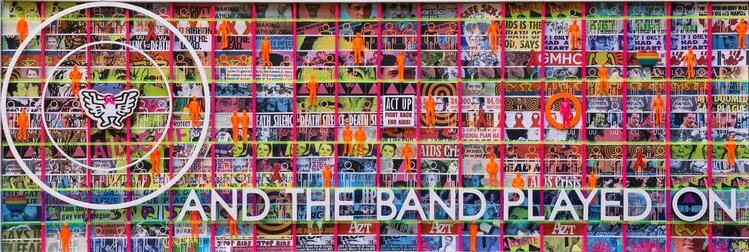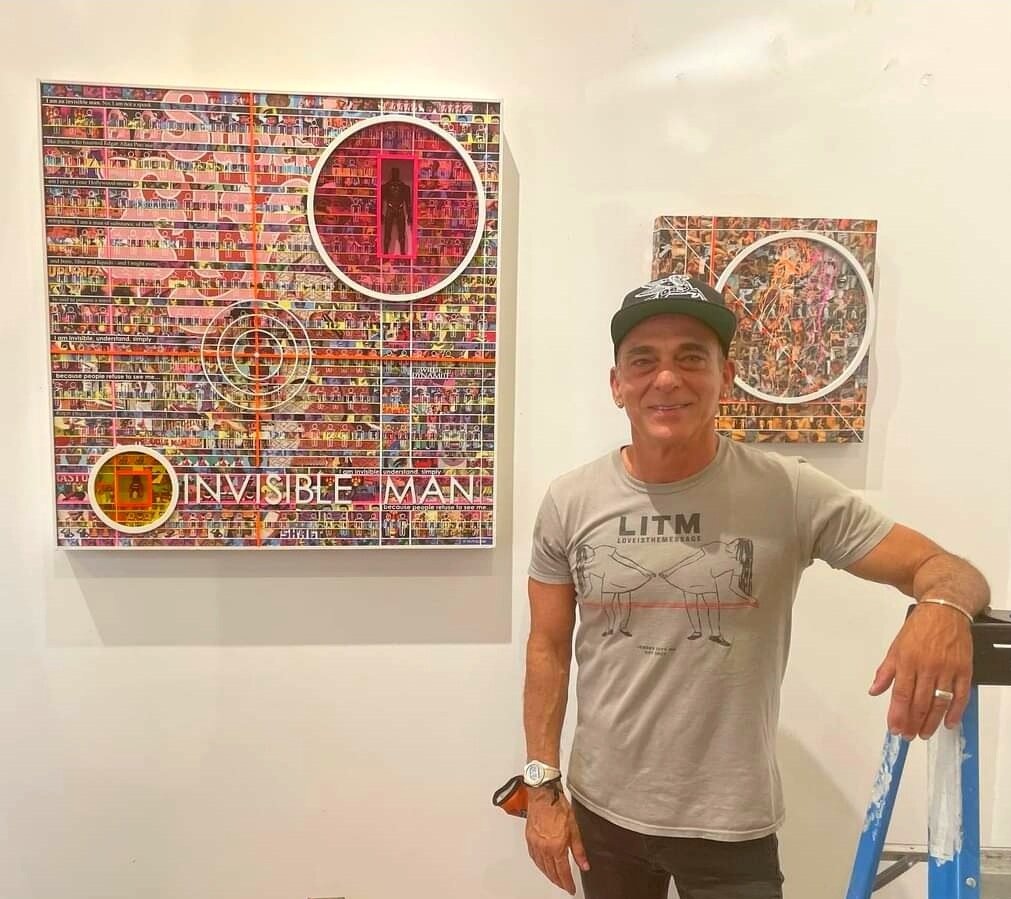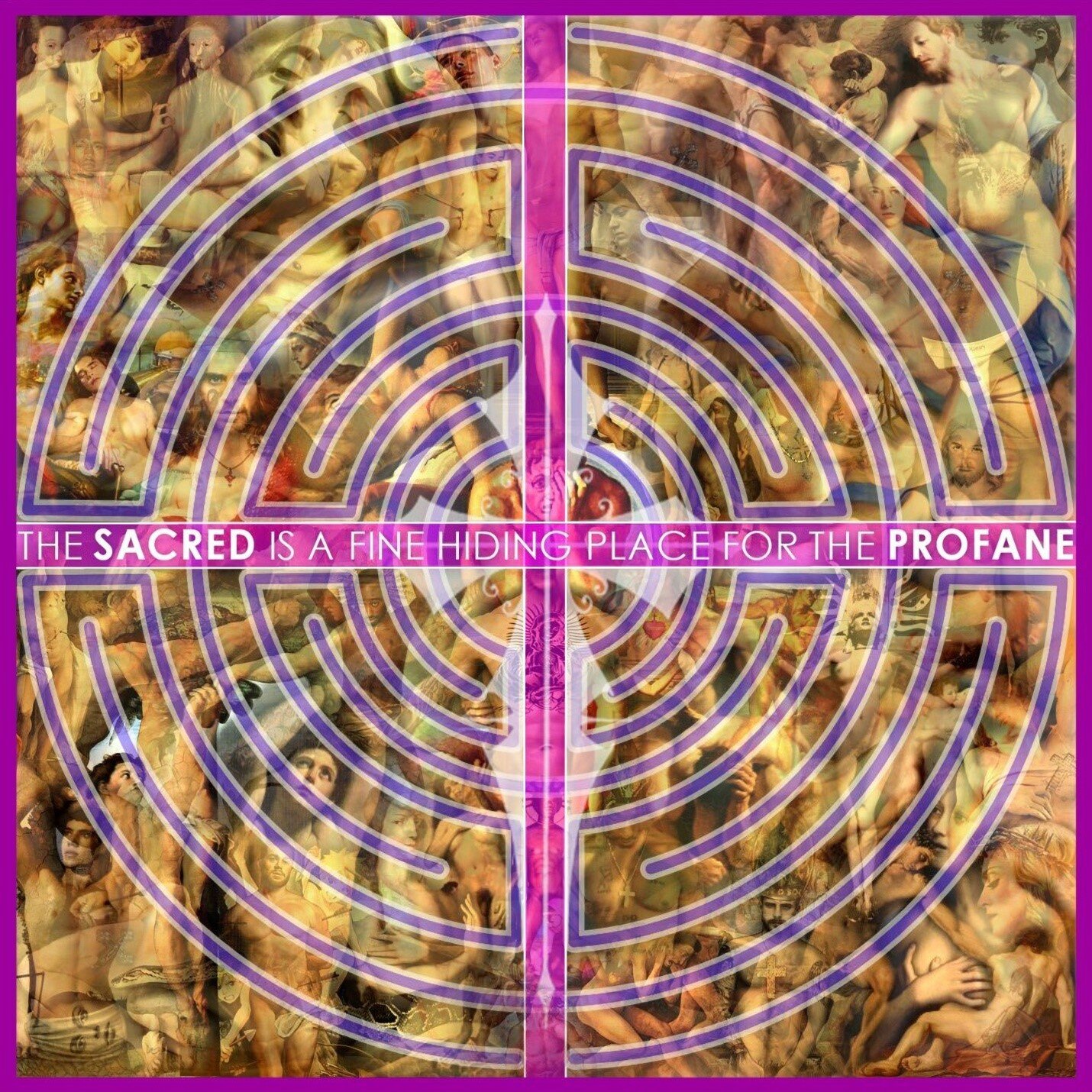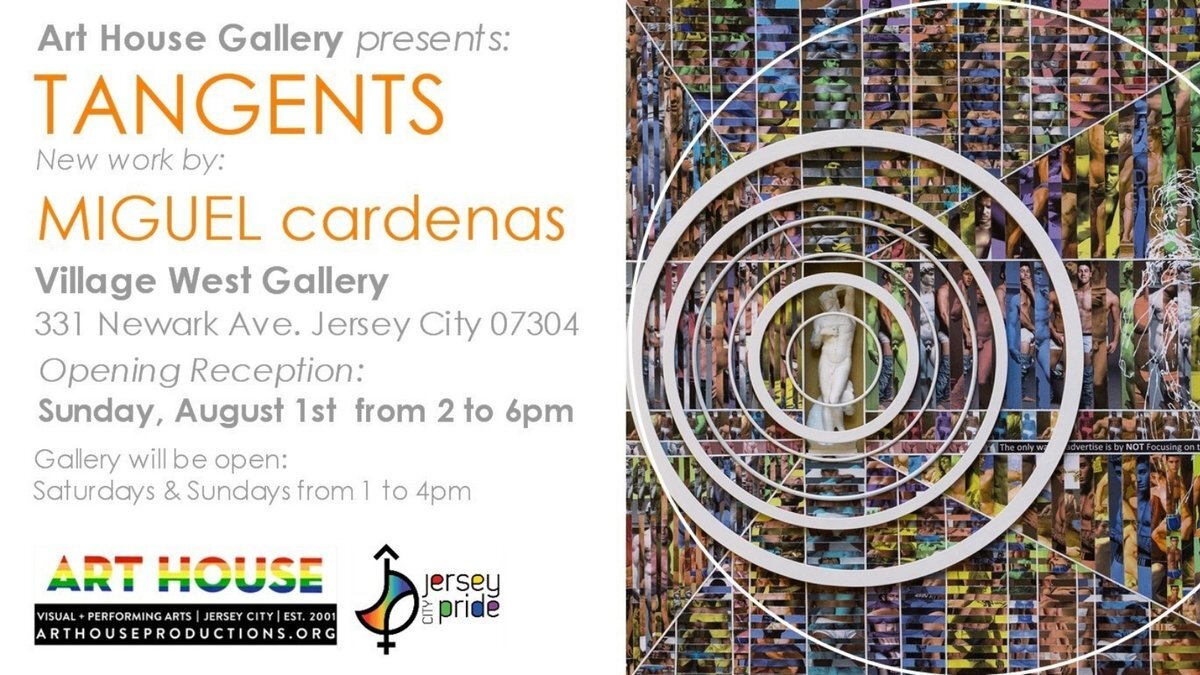TANGENTS: A Conversation with Artist Miguel Cardenas and Curator Andrea McKenna

Today, JC Fridays, Jersey City’s free quarterly arts festival, will be in-person for the first time since the COVID-19 pandemic began. It also happens to be your last chance to catch TANGENTS at Village West Gallery (331 Newark Avenue), a solo exhibition of work by Miguel Cardenas, presented by Art House Gallery. We recently spoke with Cardenas and curator Andrea McKenna about how the work in TANGENTS emerged from peak lockdown, and what the return of in-person JC Fridays means to the arts community in Jersey City.

And The Band Played On, Miguel Cardenas
Jersey Arts: Could you each pick one work in this exhibition and describe it, unpack it, or just tell us why you like it?
Andrea McKenna: Yes! I love And The Band Played On. I think that's a really important piece. It's the 40th anniversary of AIDS this year. It’s personal for me because I have someone in my family that lost their life to AIDS. I love the piece because it has so many different elements to it – so much history in one place. I also have another favorite that's from his older work that's hanging in the show – A Fine Hiding Place. He's going to laugh because he knows I love that piece so much. I just get lost in that piece. I love the title of it. I love the maze that's on top of it. I love the whole thing. It takes you someplace for a while. It's like daydreaming.
Miguel Cardenas: I was going to say And The Band Played On! That's a very personal piece to me. I am HIV positive, and I've been so since 1991. There's a lot of people that I knew that were lost in those early days. And that piece really talks about the first decade of the activism that grew out of it. But I think the one that I probably would talk about, that I'm quite proud of, is The Invisible Man, which is the largest piece in the show. It's about the search for Black male identity. I'm a person of color, but I'm not Black. I'm Cuban-American. But I read The Invisible Man in high school, and it really struck me how, with this whole George Floyd story and the Black Lives Matter movement, there are just so many connections, across decades, between that book and the way Black men are perceived and portrayed in the media. And that’s what this piece is about.

Miguel Cardenas with The Invisible Man
JA: Miguel, I read that you are also a veteran designer of exhibitions, and that you've done a lot of work in museums. So, how did you approach your own exhibition?
MC: I was trained as an architect. I have an undergraduate degree in architecture, as well as a master's degree in architectural theory and advanced design. I think that really shows in a lot of the work – the structural and geometrical organization of it.
JA: I've spoken with a lot of artists and a lot of people who work in arts organizations since lockdown began, and everybody dealt with it differently. For you, as an artist, what was that time like?
MC: The big difference was time – just having it. Most artists that I know are working artists. We wish we could just make art all day every day, but we have to work. So, during lockdown I found myself, at first, not being able to go to work, not even teaching at all. I had more time than I’d ever had to focus on making art.

A Fine Hiding Place, Miguel Cardenas
JA: You currently work with autistic students at Dickinson High School in Jersey City. When did you start working in education?
MC: As an architect, I was a senior design associate at a firm for 24 years. But, even in that 24-year span, I worked on a lot on educational programs, and designed educational exhibits for children. So, that involved working with educators. I also co-taught architectural classes. I was a visiting critic at Parsons, at Pratt. I taught an exhibition class at NYU. So I have always been very involved in education.
There was a time when I really felt that I wanted my life to change a little bit. I left the firm and I took some time off just to reflect and think about what this next chapter could be like. And then this job fell in my lap. I started assisting at Dickinson High School in Jersey City and it was great. I found a whole new side of me that I didn't know I had.

JA: Let’s talk about JC Fridays and what this one's going to be like.
AM: JC Fridays was created by Art House Productions many years ago, and for the last year it has been all virtual, which, in some ways, worked out really well because people from all over the country were tuning in. Also, Jersey City is a big city. So, people can't really get to everything in one day. But, virtually, everyone was able to see everything. All that aside, today we’re back, in-person, for the first time since the pandemic hit our region. There’s just no comparison. It’s a special day for us.
JA: What else do you want people to know about this show, and what are you hoping people get out of today’s JC Friday?
AM: That's easy. I want people to connect again and feel good about coming out, safely of course. Masks are required, just to put that out there. It’s going to be great just seeing the community again and, hopefully, meeting new people.
MC: First of all, I have to say, I'm so grateful to Andrea, Art House, and Village West Gallery. People have loved TANGENTS and that makes me very happy, as it would any artist. Regarding JC Fridays, I love going out, seeing friends, meeting new people. It’s been a long time since the Jersey City arts community got together in real life. I can’t wait to see everybody out there again. I've exhibited in JC Fridays for many years, in many different venues, and I do love the social aspect. I miss exhibitions being social events. We’re a very tight knit arts community here, and we’re all yearning to see each other, and to see each other’s work.

Images in cover photo include: "Change + Repeat," "Pink Narcissus," and section of "TANGENTS,” all by Miguel Cardenas
